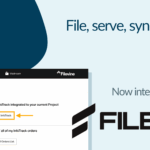In March 2020, courthouses across the United States began to close in response to the rapidly developing coronavirus pandemic. While the physical buildings were entirely shut down to the public, the critical services that the courts provide remained, however.
Faced with this reality and uncertain how long it would last, the courts responded as best they could. The uptake of technology—including video, eFiling, and online case management—was accelerated to keep the courts functioning.
Tech and ways of working that previously seemed a step too far for institutions as austere as the courts began to seem sensible, even normal. Now that we are beginning to emerge from the crisis, though, it is time to ask: what of these changes will stick? Will the civil courts be forever changed?
Online hearings
The most obvious and immediate change was the embrace of online video conferencing tools, such as Zoom, to conduct court business. The media has obsessed over the idea of full-blown jury trials taking place online, with jurors carefully listening in from their living rooms.
For sure, there have been some experiments with online jury trials, but the real change has been in the more routine aspects of litigation—motions practice, pre-trial hearings, status conferences, and the like. Conducting these shorter proceedings online makes clear economic sense for the courts and for parties involved who need not waste time traveling or waiting.
Confidence in online proceedings is high. In their 2021 Litigation Trends survey, Norton Rose Fulbright found that most respondents were “as confident in the remote processes as they had been when things were done face to face.”
Arguments previously put forward by attorneys for maintaining the in-person status quo no longer stand up. Notable exceptions aside, contentions that the technology is too expensive, hard to use, and unreliable and been extensively disproven by practice. As a result, it is hard to see these developments not sticking with us.
Electronic court filing
Given how much of our daily lives is now conducted online, it can be hard to believe just how slow the courts have been to adopt even basic tools like eFiling. In 2019, there were still hundreds of counties across the U.S. that require all court filings to be physically delivered on paper to the courthouse.
For example, in California, at the beginning of the pandemic, fewer than 20 of the state’s 58 counties had a functional means of electronically filing documents.
These paper-based courts struggled with accepting filings in person. San Francisco Superior Court (which has since implemented eFiling) made headlines when local journalists found that they could simply walk into the courthouse foyer and access all the filings left for processing in open drop boxes.
The result has been a rush to implement, and to mandate, eFiling. Aside from the obvious benefit of removing the need for physical interaction, the case management tools that often sit behind eFiling systems also help the court clerks themselves to manage the influx of papers.
Whereas triage in a paper court consists of sorting through tens of thousands of pages of documents, the data submitted alongside the actual PDF documents allows courts to prioritize filings by type with greater speed and ease.
The downside of this rush to move online is the increasingly disparate range of systems in use and the varying rules and requirements in each jurisdiction.
In jurisdictions, like California, where even neighboring counties can use entirely different systems tools like InfoTrack, which combine integrations to multiple counties regardless of their choice of technology, certainly help. Nevertheless, expect to see state-level authorities issue more rules in the coming years to normalize procedures as much as possible.
The backlog (and the coming tsunami of new cases)
Two factors make a return to the status quo highly unlikely: The sheer unprecedented scale of the backlogs facing most courts and the enormous wave of new cases on their way as we emerge from the crisis.
Going into the pandemic, most courts were already backlogged. A year of on-off lockdowns and social distancing have seriously exacerbated the situation. While state court data is notoriously slow to be released, near real-time data from the federal courts gives us a clue as to what is happening at the state level.
The federal civil courts started 2020 with just over 350,000 pending cases; they ended 2020 with well over 525,000 (a 46% one-year increase). A similar percentage increase in the state courts would mean hundreds of thousands more pending lawsuits.
Evidence from the last significant period of economic turmoil (the 2007-08 crash) suggests the worst is yet to come. After that crisis, state court civil filings increased by more than 1.5 million, with more than half of the increase coming from creditor-debtor and landlord-tenant disputes. This time around, given the huge upheavals in the world of work, we can anticipate a significant increase in employment matters too.
This crush of old pending cases coming due, plus millions of new cases being added to the docket, could not come at a worse time. Like other parts of the state budget, the courts have had to absorb budget cuts that have diminished their ability to respond.
Is this just the beginning?
Faced with this future, moves to utilize Zoom for some hearings and to submit filings and review dockets online probably will not be the end of the changes in the courts. Those developments will be necessary to keep the court system running, but on their own they will not provide sufficient efficiencies on their own.
For these reasons, we are likely to see more substantial changes, both in terms of adopting technology that allows clerks to process cases more speedily and procedurally to reduce the length of time cases exist within the court system.
Tracking technological change and building integrations that help your firm quickly adapt to and leverage it is what we do at InfoTrack. To learn more about our integrations with courts across the United States can help your firm schedule a demo.
Author
-
Richard is Vice President of Sales and Marketing at InfoTrack. He has worked with law firms for more than a decade to advise on adapting to regulatory and technological change. He writes about the courts, civil procedure, and developing trends that may affect law firm operations.
View all posts






